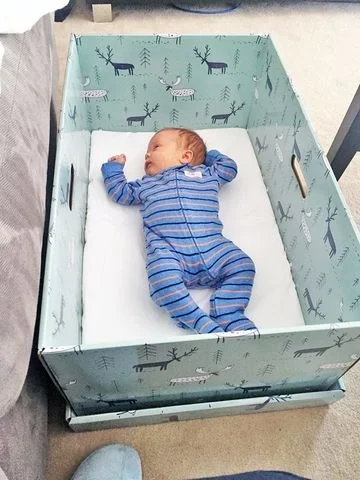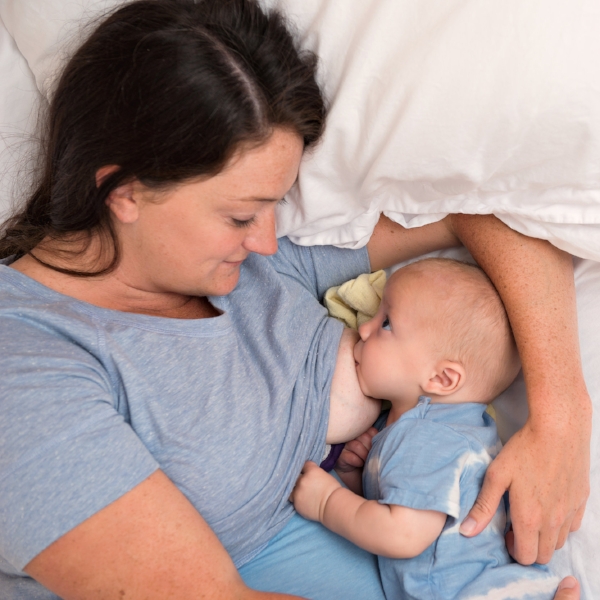Recently Ann Grauer wrote a blog about the distribution of "Baby Boxes" that I think deserves greater circulation. She refers to a program in New Jersey in which families are being provided with a large carboard box with a mattress and fitted sheet. Additionally the program provides education about safe sleep practices. The idea for the box comes from a program in Finland which supplies not just a box but a whole layette of items for a new baby.
The purpose of the New Jersey program is to educate parents about safe sleep practices and provide them a safe space for their baby to sleep. But it’s not really the box that makes the sleep any safer—it’s about education.
In Ann’s blog she writes:
"The United States has got to walk away from terrifying parents, preying on their fears and refusing to discuss any places for infant sleep other than in a crib..." (or, now, a box)
I couldn't agree more.
Indeed-- many parents, despite the warnings of the American Academy of Pediatricians, find they bring their baby into their bed with them at some point-- often out of desperation to get some sleep when their child refuses to sleep alone. Worse, parents have become so frightened of bedsharing that they may decide to take the baby to sleep on their chest on the couch or easy chair-- a decidedly unsafe place to sleep.
Here are the official guidelines from the AAP on creating a safe sleep environment include:
Place the baby on his or her back on a firm sleep surface such as a crib or bassinet with a tight-fitting sheet.
Avoid use of soft bedding, including crib bumpers, blankets, pillows and soft toys. The crib should be bare.
Share a bedroom with parents, but not the same sleeping surface, preferably until the baby turns 1 but at least for the first six months. Room-sharing decreases the risk of SIDS by as much as 50 percent.
Avoid baby's exposure to smoke, alcohol and illicit drugs.
In my experience only a few babies are up for solitary sleep straight from the womb. Generally, they sleep better in close physical contact with another person.
Enter Dr. James McKenna, Director of the Mother-Baby Behavioral Sleep Laboratory at University of Notre Dame, who has worked tirelessly researching infant sleep. It is his contention that mothers and babies have always been meant to sleep together, with proper awareness of safe bed sharing guidelines. Indeed, McKenna has coined the term “breastsleeping” to refer to the intimately intertwined nature of these two activities and the mother infant relationship. This doesn’t fit in with the use of Baby Boxes, cribs or bassinets as the primary sleep space for infants. Dr. McKenna’s work and writings on the topic are vast. I encourage you to dive in to his website a bit to learn about the scientific research behind how infants sleep.
An example of safe bed sharing where breastsleeping can take place.
A Box, A Crib, A Bassinet, the Family Bed
So where should you have your baby sleep tonight?
This is a personal decision. Read through the safe sleep guidelines from both the AAP and Dr. McKenna. Take a look at what your options are in your home, and your personal situation with respect to smoking, feeding method, etc. Make a decision that works best for your family. It doesn’t have to be forever. You can change up the plan based on what’s working – but continue to keep in mind what’s generally accepted as safe sleep practices.
Sweet Dreams.


